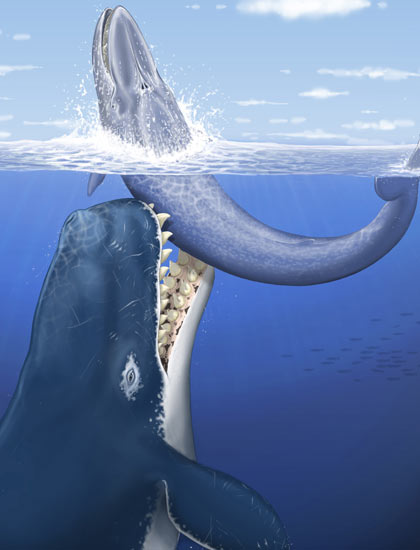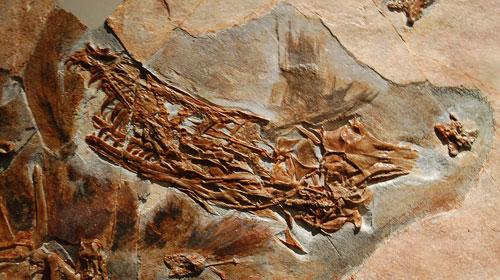Leviathan melvillei
Recently, the scientific community discovered the final resting place of an ancient sperm whale in the middle of the Peruvian desert of Pisco-Ica called the Leviathan melvellei. This sperm whale had teeth that are much larger than today’s sperm whales.
The genus name refers to Leviathan from the Bible, while the species epithet is named after Herman Melvilled who wrote Moby Dick. The fossil was found in 2008 on a field trip of the area by Researchers, and the finding was published in the Nature journal on June 30, 2010.
The fossil discovered was carbon dated at being approximately 12 to 13 million years old. It was such a startling discovery that it now belongs to a new but extinct genus and species. It is thought that the Leviathan melvelli hunted the baleen whale.
Researchers were able to recover 75% of the Leviathan’s skull, including big fragments of both teeth and jaws. It is thought that the Leviathan’s skull is 3 meters long, and therefore this whale was a whopping 13.5 to 17.5 meters long which is within the range of existing adult male sperm whales. The skull has a curved basin, which suggests it may have had a spermaceti organ which is a series of wax and oil reservoirs that are seperated by connecting tissue.
The longest teeth where a massive 36cm long. However, even though the sperm whale looks like the leviathan, its functional teeth is in both jaws which is unlike the sperm whale which only has teeth in its lower jaws.
The fossilised whale was found in Cerro Colorado, in the Pisco Ica desert. In the ancient times, it is thought the area was a shallow lagoon as fossils of other animals such as the baleen whale, beaked whale, turtles, dolphins, and sea birds have been found. However, the Leviathan melvillei would have been the top predator in this lagoon, together with the Carcharocles megalodon which was a 20 meter long giant shark.
The fossil is now placed in Lima, the capital of Peru, in the collection at the Natural History Museum.




